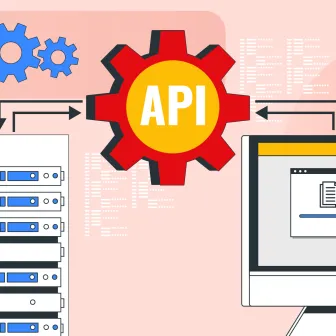In the former times, the businesses were seen depending solely on developers for writing code and creating experiences right from the beginning to the end. But now, hopefully, it is not only on the shoulders of developers alone. The responsibility of establishing a seamless digital experience has been shared with marketers, success teams, business users, and many more. Therefore, modern development necessitates different approaches and solutions to create new services and applications. By adopting best practices, modern applications need to ensure technical feasibility by prioritizing component-based design principles. Consequently, with low coupling and high cohesion, components and services can be properly assembled into various kinds of applications.
You will have to be careful while selecting the right assembly model for your project’s success. Well, these assembly models are classified into three categories such as high code, low code, and no code. You will find that every assembly model possesses its own strengths that can be very beneficial for your business needs. So, through this article let’s understand the pros and cons of these approaches and help you in choosing the best one.
High code
High-code assembly depends on developers in order to write and deploy code. This type of assembly model is perfect for applications where the code is required to be coupled to the experience itself. Developers mostly depend on JavaScript frameworks such as React or Angular, or frameworks particularly designed for native applications or mobile. Also, data and content are provided through a headless CMS or other API-based services. This kind of approach can be an ideal choice for a “code-driven” experience that is tied to code deployment cycles. Even though data and content can be well handled and updated from remote systems due to demand, the real experience and interface are managed by developers. Since in a high-code approach, businesses majorly rely on developer resources, the developers are deprived of valuable time which could be utilized in creating innovations and new features.
Low code
Low code can be considered as a software development method that helps in building applications even without deep coding. This particular method enables you to go for customizing your applications per your requirements. Rather than majorly depending on programming, low-code platforms prefer techniques such as drag-and-drop functionality and also visual guidance. It means that anybody in your organization, despite their technical abilities or expertise, will be able to create applications in order to provide some relaxation to the IT department by offloading some tasks.
The potentials
Some of the low code advantages can be like it helps in providing accelerated development and delivery of applications. Then it allows streamlining the development process, enabling the developers to build applications in much less time. This development platform offers a central location from which the IT teams are able to monitor and handle each and every development project with complete visibility. And, the citizen developers are immensely benefited as they are able to utilize the pre-built functionality of low-code platforms that lead to better innovation and progress in the business.
The drawbacks
Some of its disadvantages can be like:
- Lack of customization
Even though low-code platforms offer the capacity to easily write codes and even integrate external APIs in the low-code app, still this capacity can be seen as restricted. There is a limitation to it and low-code platforms very often come across some difficulties while integrating custom-written code in the low-code application.
- Increased cost in the long run
Although low-code solutions tend to afford you an important cost cut in the development process in comparison to hiring a developer. But in the long run, you will find that the cost of maintaining low-code solutions is crucially higher than that of the traditionally built applications. In fact, some of the low-code platforms are found charging fees for your application runtime.
- Requires programming knowledge
Even if in low-code platforms, very little or no coding is required, you still are supposed to have proper knowledge of coding and the logic behind your application in order to make the best out of the platforms.
- Restricted observability
It is certain that you won’t get access to each and every execution layer of your application (e.g., systems and runtimes). Also, if some of the low-code platforms offer you access to your application metrics and logs, still it won’t be enough if observability is one of your necessities. Logs, metrics and tracing can be considered as the pillars of observability, and most of the platforms won’t be sharing them with users. More on the underlying principles of observability here.
- Security issues
Security can be a major concern while building applications or automating workflows amongst various applications with a low-code platform. Therefore, a low-code platform requires to have a well built-in governance and security which can further restrict the ability of business users to build code or apps that are harmful or damaging.
- Need developer’s assistance beyond simple use cases
One of the drawbacks of low-code platforms is that it needs developers beyond simple use cases. Let me show you what one of the reviewers of a low-code app development Filemaker wrote, “Filemaker generally requires the help of a consultant or developer if you want it to reach its potential.” Also, one different user discussed their personal experience with low code platforms, “They are fine for simple things but then the customer will come up with more detailed requirements and then you end up programming those new requirements with traditional programming, which is even harder because what you customize yourself has to fit in with the platform.”
- Vendor Lock-In concern
Vendor lock-in can be considered as one of the biggest drawbacks of low-code platforms. Most of them presume that they are just locked into the vendor they select. Although, this can vary from vendor to vendor. At times it is observed that some of the vendors generate complex code which makes it difficult to even maintain an application outside of their platform.
Read more on why low code is not as great as you might think.
No code
No-code solutions prefer using the drag-and-drop feature, and also visual development. They usually support business people or even others in the IT department who might not know real programming languages but wish to build an application for a specified use case for their department. No-code enables companies to support their teams with the important tools they require to build applications without any formal development training. It is quite similar to the famous blogging platforms and e-commerce website design organizations that have pre built pages which you can utilize to launch your business in just minutes.
The potentials
No-code solutions enable you to build applications in a much faster way than just doing it from the scratch. It allows you to develop enterprise solutions with a significant number of good features at a low fraction of the cost in order to hire a developer who will build it simply from scratch. Due to its high speed, it helps you to quickly test out different ideas, work upon them if it works, and even rethink them if it doesn’t. And, you can simply resolve errors, change and modify various components and logic of your application by easily dragging and dropping.
The drawbacks
Here are some of its disadvantages:
- Inability to show creativity
One of the major issues you happen to face while utilizing no-code platforms is the incapacity to develop something out-of-the-box. You are generally restricted to the built-in templates which you can’t modify and also stop you from using your creative capacity to create exclusive solutions.
- No proprietary rights
For most of the no-code platforms, you do not get access to the application's source code. It basically restricts you from completely using your database and stops you from even leaving the platform since you cannot ship your current application elsewhere.
- Security and Compliance concerns
Most of the no-code platforms integrate high levels of security and compliance in their system. Since their integrated compliances are generally limited to European laws, you won’t be able to incorporate custom compliances particular to your location in no-code applications. And, if the no-code platform experiences any security attacks, there is a chance that your application developed on that platform will be affected, which might lead to downtime.
- Lesser flexibility
Since no-code apps are restricted to the tools, components, and features delivered by the platform you are utilizing, your capacity to use external solutions in your app is also restricted eventually.
- Users need to have clarity on their requirements
Since no two no-code platforms, nor their respective restrictions are similar, a user should first identify whether their needs fit within the constraints of a specific tool. Even then, these needs tend to change over time naturally, therefore the risk of these diverging from the evolving capacities of the platform is always available.
- Basic knowledge is a must
No-code app platforms work by enabling users to put the interfaces together by themselves. Therefore, the ones with zero development expertise or expertise in interface design and usability might end up building poor applications. So, it is always advisable to have a very basic understanding of coding.
Conclusion
I hope that with the above-discussed explanation you gained clarity about which approach will best suit your business needs and expectations. So, keeping that in mind you can now adopt the right approach and help your business achieve its planned business outcomes.
Subscribe
Related Blogs
AI Fairness: A Deep Dive Into Microsoft's Fairlearn Toolkit

Artificial intelligence (AI) has changed the game across industries, especially in financial services. From automating…
API Documentation Tool: 10 Best Tools For 2025

A Google search for ‘Best API Documentation Tool’ will show many results. The growing number of API documentation tools…
Debunking 6 Common Software Testing Myths

A flawless product delivery requires a perfect combination of both development and testing efforts. Testing plays a vital…




